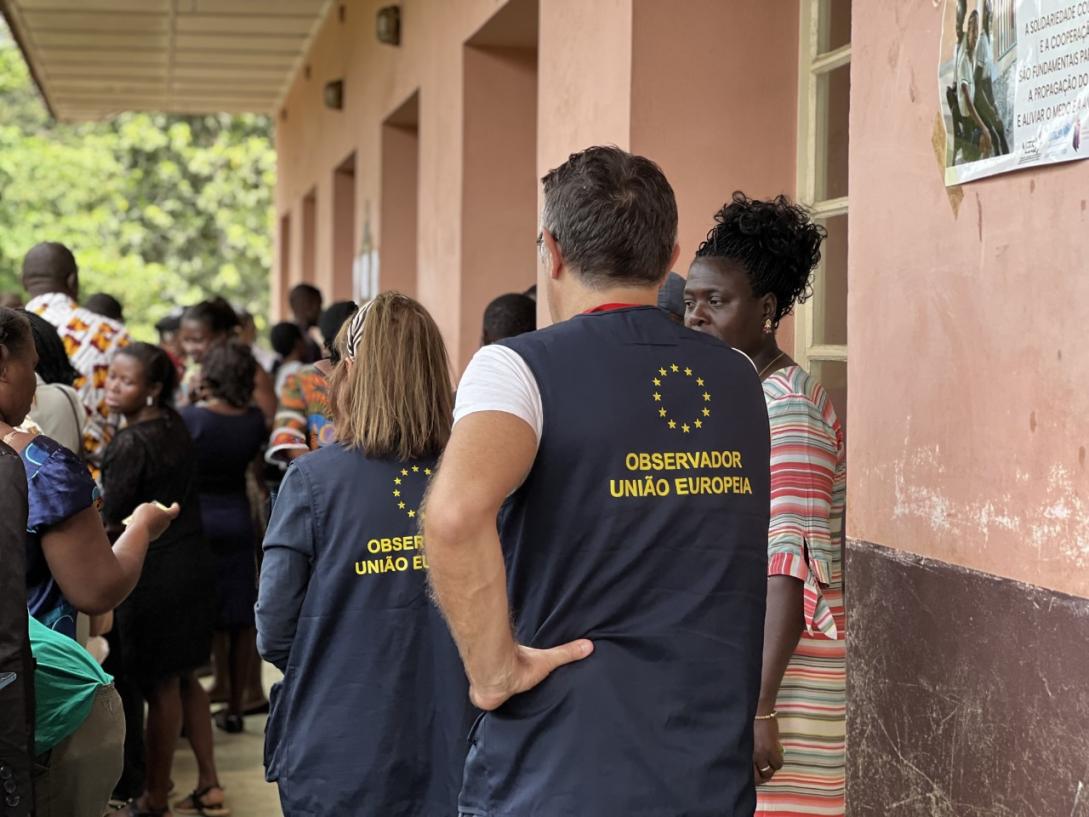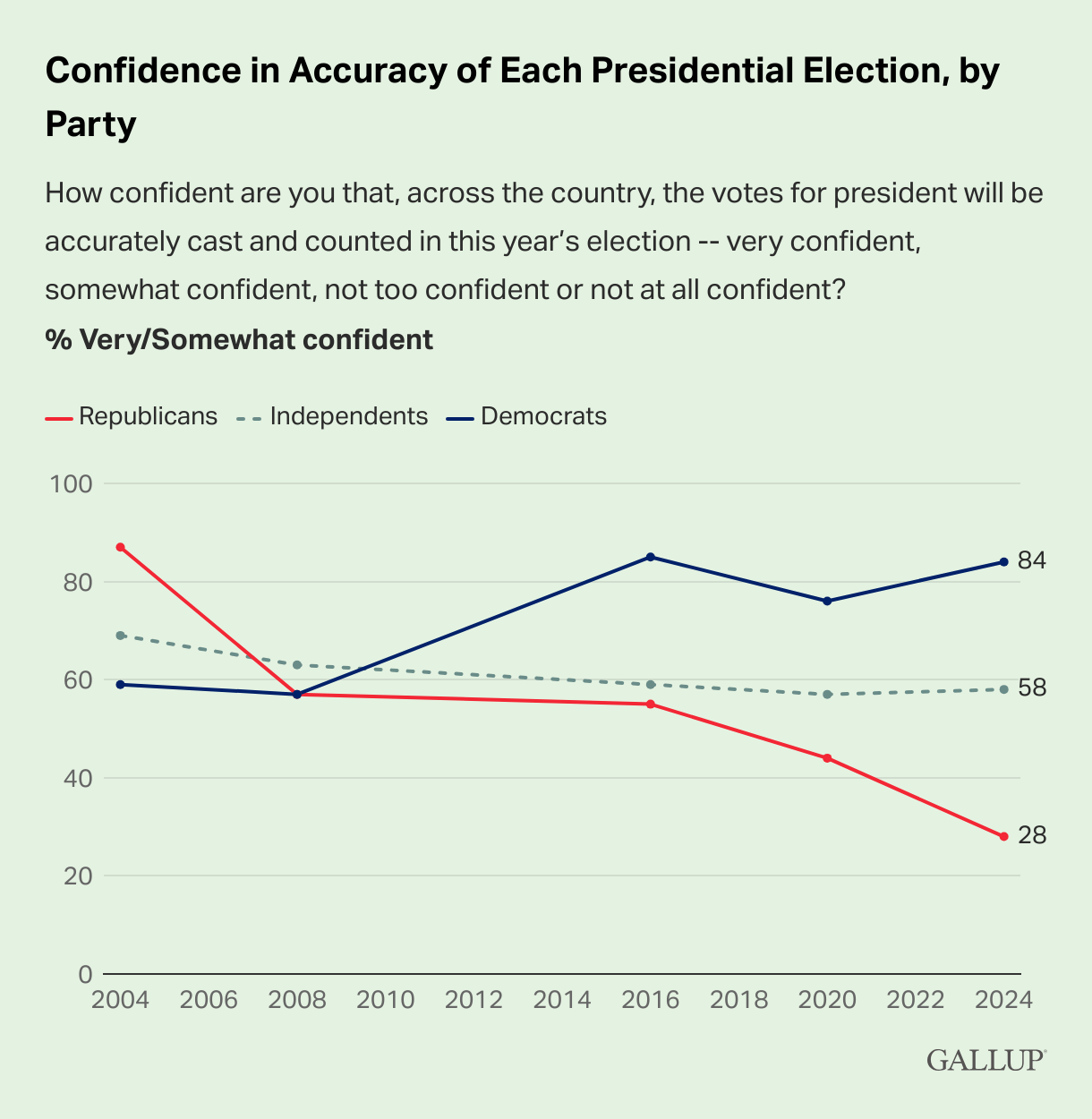9.4 Electoral Integrity and Trust
The concept of electoral integrity refers to a general collection of practices and policies to combat election fraud and malfeasance. The Global Commission on Elections, Democracy and Security (2012) defines electoral integrity as:
Any election that is based on the democratic principles of universal suffrage and political equality as reflected in international standards and agreements, and is professional, impartial, and transparent in its preparation and administration throughout the electoral cycle. (pg 6)
Efforts to promote electoral integrity can include administrative procedures and oversight that ensure fairness and accuracy in the electoral process, but they can also include measures to prevent interference from malicious actors.
Election Monitors

To help preserve the fairness and integrity of the electoral process, international election observers may be assigned to monitor the election. Typically, observer missions watch ballots being cast and counted at polling stations (The Electoral Integrity Project, 2023). The presence of international observers can have a deterrent effect, reducing the potential for violence and election fraud (Asunka et al., 2019; Leeffers & Vicente, 2019), although committed bad actors can redirect their efforts or simply expel the observers.
Regulatory Measures
Elections Canada has policies in place for ensuring electoral integrity, including measures to deter fraud and uncover instances of multiple voting.
Activity Description
Before the Vote
The National Register of Electors is updated using more than 40 sources of information to ensure that only individuals who are entitled to vote are on the lists of electors.
During the Vote
- Electors must prove their identity and address before being allowed to vote.
- Electors are struck from the list of electors once they have voted.
- The vote is secret to protect individuals from being forced to vote a certain way.
- Voting and counting can be observed.
After the Vote
Post-election verification are done to make sure that any irregularities not spotted during the vote are found and looked into.
Before the Vote: The National Register of Electors is updated using more than 40 sources of information to ensure that only individuals who are entitled to vote are on the lists of electors.
During the Vote:
- Electors must prove their identity and address before being allowed to vote.
- Electors are struck from the list of electors once they have voted.
- The vote is secret to protect individuals from being forced to vote a certain way.
- Voting and counting can be observed.
After the Vote: Post-election verification are done to make sure that any irregularities not spotted during the vote are found and looked into.
There is a general consensus that successful efforts to increase election integrity include regulating political finance, strengthening Electoral Management Bodies (EMB), and fostering an open media environment (Resimić & Bergin, 2024). By strengthening the integrity of the process, election officials can hopefully maintain public trust in elections.
Trust In Elections
Elections are an act of trust. We trust election officials to register us and keep that information secure. We trust that voting locations, with sufficient quantities of ballots, will open when and where they are scheduled. We also expect that votes will be tallied and reported accurately. Without adequate levels of trust, it is difficult to maintain the social cohesion, economic cooperation, and effective governance necessary to maintain political stability (Norris, 2022).
 Sources of Mistrust
Sources of Mistrust
Generally, trust in elections can be a product of institutional performance, effectiveness and transparency, but it can also depend on individual-level factors (Kerr et al., 204). At the individual level, feelings of mistrust can be cultivated by media diets and messages from politicians, but they can also be influenced by election results, with voters feeling more negative when their party loses and more positive when their preferred party wins (Daoust & Nadeau, 2023).
Trump and Trust
After losing the 2020 Presidential Election, US President Donald Trump propagated claims of voter fraud and other irregularities with the electoral process. The messaging led to a partisan gap in trust, with Republicans being far less likely than Democrats to trust the electoral process.

Image Description
Line graph titled “Confidence in Accuracy of Each Presidential Election, by Party,” showing the percentage of Republicans (red), Independents (dashed grey), and Democrats (blue) who reported being “very/somewhat confident” that presidential votes will be accurately cast and counted, from 2004 to 2024.
- Republicans: Confidence declined sharply from 85% in 2004 to 28% in 2024.
- Democrats: Confidence increased from 59% in 2004 to 84% in 2024, with the highest level (over 80%) seen around 2016.
- Independents: Confidence remained relatively stable, ranging from about 60% in 2004 to 58% in 2024.
The chart highlights a growing partisan divide in confidence over election integrity.
After winning the 2024 election, Republican trust rebounded with 82% of Republican respondents trusting that results were counted accurately (Kousser et al., 2024). The partisan differences in trust were likely a function of Republican partisans reacting to election results and responding to elite cues.
Trust and Corruption
The presence of corruption can also erode trust. Transparency International tracks levels of trust around the world using its Corruption Perceptions Index (CPI). Countries at the top of the rankings, such as Denmark and Finland, are characterized by legal systems that prevent public sector corruption, independent institutions, and fair elections. Countries at the bottom of the list, such as Somalia and Venezuela, are typically repressive authoritarian regimes. It’s not uncommon for levels of trust to fluctuate from one year to the next, which underscores the fragile nature of trust in elections.

